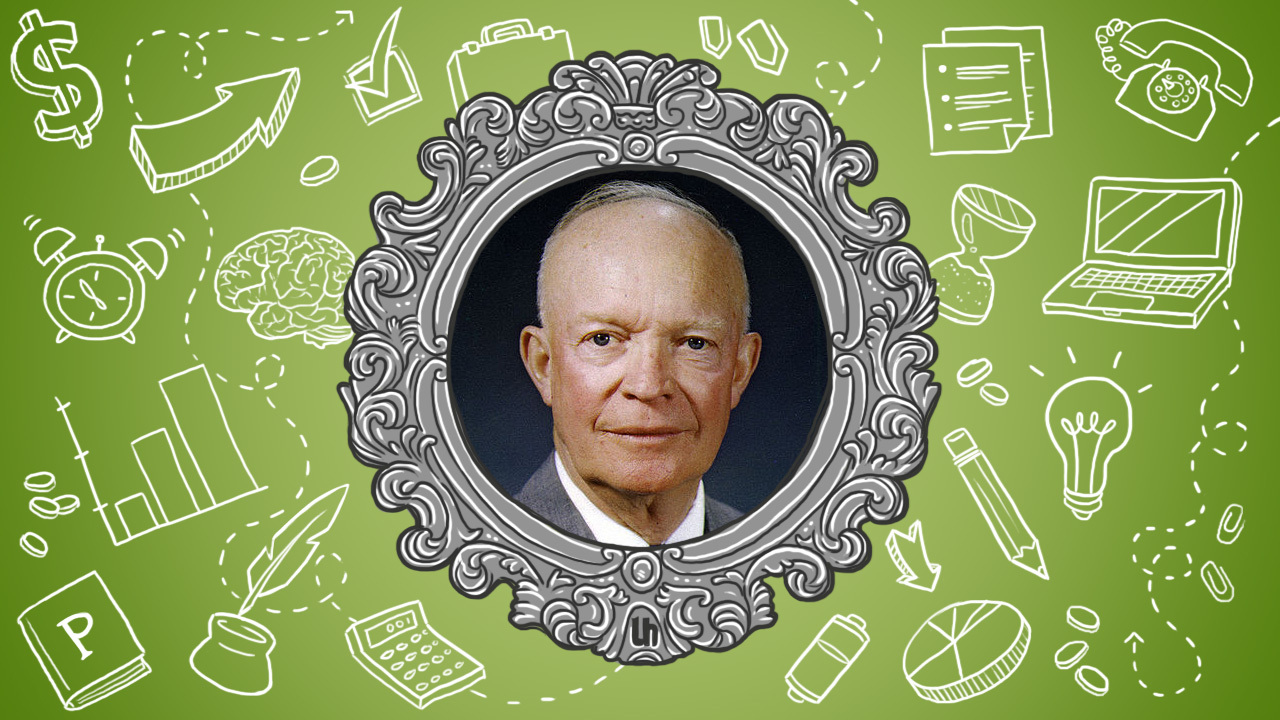
We have already written how to cope with fear and procrastination halting us on our way to achieving the goals. However, as soon as we’ve left the “dead zone” of inactivity, and motivated ourselves on the result, we can go to the other extremity: after a long 8-12 hour workday it’s impossible to say what, in fact, we’ve managed to do. And most importantly, what result have we got from our efforts? Has it moved us towards the desired goals?
Subsequently, it’s easy to find yourself in a situation when you are “as busy as a bee”, but the things seem to keep standing still. Only the fatigue is accumulating. The feeling of the heights achieved has never come.
The Problem of Goal-setting
 In time management, this issue has received a name of “goal-setting problem”. The consequences of errors in the goal-setting can be immense: it seems that life becomes a series of exhausting working marathons with no visible results. It’s similar to the labour of the ancient Greek King Sisyphus, who was sentenced after his death to rolling a huge boulder uphill then watching it roll back down again as soon as it had reached the top. And so – eternally.
In time management, this issue has received a name of “goal-setting problem”. The consequences of errors in the goal-setting can be immense: it seems that life becomes a series of exhausting working marathons with no visible results. It’s similar to the labour of the ancient Greek King Sisyphus, who was sentenced after his death to rolling a huge boulder uphill then watching it roll back down again as soon as it had reached the top. And so – eternally.
.
Selecting the Goals and Priorities
Despite the fact, that it’s a large-scale problem, and its consequences are of complex and protracted nature, it’s still possible to fight it. To do this, before any operations you need to properly set goals and get your priorities straight. How to do this, we’ll describe down below, but now, please, concentrate on a sole thought:
Don’t kick start the tasks in hand, if you can’t answer the question of how far and to which goal this or that task will move you after its implementation.
The operation method of “doing-at-random-everything-in-sight ” can be almost perfectly good to “fire the inner engine”, “wake up” and start to do something. For this purpose, I usually employ household chores – their assortment is quite limited, their implementation makes the results immediately visible and the refusal to do them wouldn’t be very comfortable anyway. This activity is quite possible to be performed in a “seen&done” mode.
But when it comes to achieving the goals within the frame of a working project, before us we have a practically unlimited scope for action, which literally means we can do “anything”. In the time pressure mode (namely, this resource is always limited), the above technique will be unproductive. So, here only the golden rule of “first think, then do” will save us.
Quick Goal–setting
Then the question arises: is there any effective method to “think fast” not to make it a half day task? Yes, it is appropriate here to use a method known to almost everyone who has ever tried to see into time management and which we have headlined in this post. It’s the Eisenhower matrix. It has been already described before in other posts (we’ll provide their more or less complete list at the end of ours). However, we’d like to offer our own way of using this matrix, which we’ve already probed in practice.
Traditionally, the invention of the matrix is attributed to Dwight D. Eisenhower, the 34th US president, who until then had been the Five-star General in the US Army. However, this is not quite true. Rather, the matrix got its name from the famous President’s quotation:
“I have two kinds of problems, the urgent and the important. The urgent are not important, and the important are never urgent.”
Matrix allows you to quickly and confidently enough sort out your tasks, even if you have a lot. All you need is to go through the list of tasks (which you have sure “dumped” out of your head by the GTD methodology) and answer the two questions for each task:
- Important? – Yes/No
- Urgent? – Yes/No
Depending on the combination of answers, each task summarily falls into one of the quadrants of the matrix, divided into 4 quadrants according to the importance and urgency of the problem.
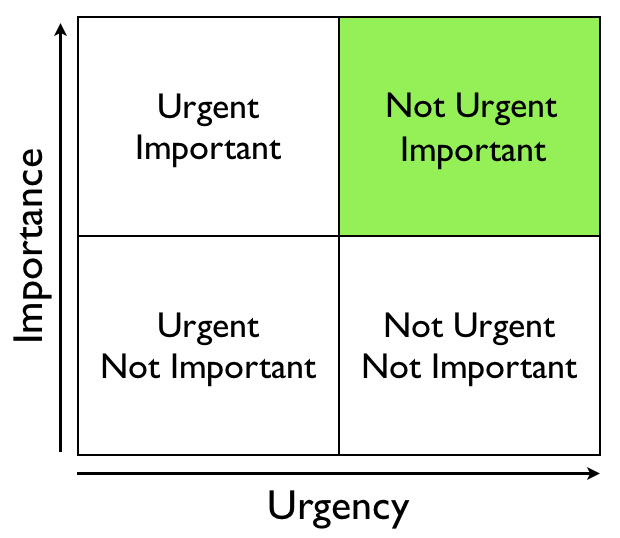
We must say, the Eisenhower matrix has got plenty of names and was presented by various adepts and creators of time management systems in many different ways. In particular, Stephen Covey, the famous author and teacher, called the matrix “Urgency/Importance matrix”; he also recommended to use it in his book “The 7 Habits of Highly Effective People”. This method is sometimes called “a visual option of “4D Principle” which will be discussed below.
How to deal with Each Quadrant
There are multiple modifications of the matrix itself and a variety of interpretations of how to deal with the tasks in a particular quadrant. We will dwell on two options, the first seems to us most handy.
Method 1: Do–Plan–Delegate–Eliminate
“Do-Plan-Delegate-Eliminate” — so sounds the “success formula”, and exactly such actions are to be performed with the tasks from the respective quadrants.
Quadrant 1. Urgent and Important. In this quadrant something happens: a fire, or a crying child, or an unrecoverable project error. That’s a “bad” quadrant, it should be avoided if possible. Occasionally, you can “put” here tasks from the second quadrant, which you would like to close immediately for some irrational reason.
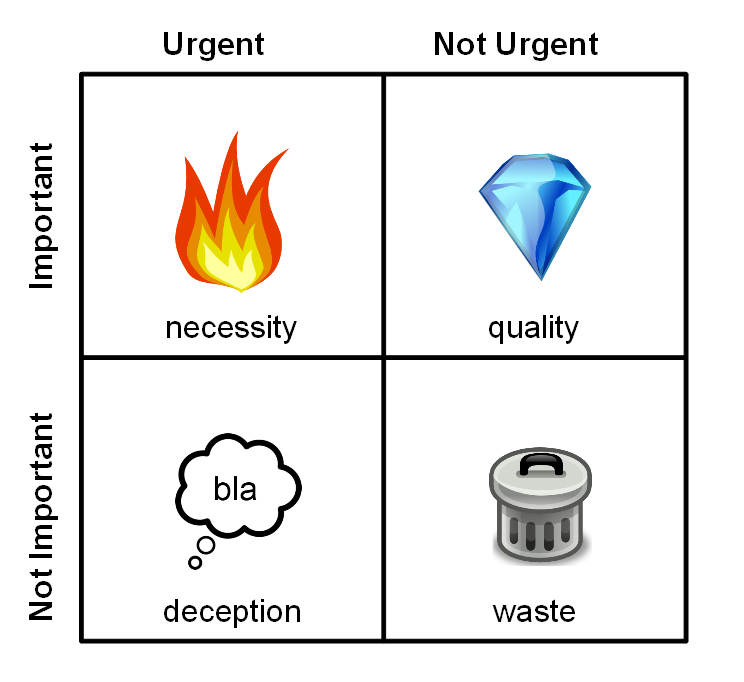
Quadrant 2. Important, but Not Urgent. In this quadrant, your most productive tasks are placed. As in this case “there’s no rush”, we are talking here about a reasonable planning and qualitative performance of each task. This is exactly on what it’s reasonable to spend the time today.
You may start doing things one by one, and you can go through the list of tasks from this quadrant once again, asking yourself the questions: “Is it important?” and “Is this urgent?”, thus making one more quadrant in the frame of the second quadrant, and further detalizing your goals.
Quadrant 3. Not Important, but Urgent. This is the most unproductive quadrant, because due to their urgency, particularly these things “snatch” you out of the flow of your productive activities and force you to “roll the boulder up the hill” aimlessly. These tasks don’t move you towards your goals; usually, they are: informational noises of all kinds, such as meetings, telethons or talks “about nothing” instead of making decisions. It is recommended to delegate these tasks to “someone else.” You may delegate or not do them at all, but the main thing is that the tasks from this quadrant are not performed by you personally.
Quadrant 4. Not Urgent and Not Important. Just forget about these tasks. Indeed, you should be able to say “no” to some things. Ideally, this quadrant had better remain empty. However, most often there fall various requests from the people who are unlikely to do something for you in response; and also dreams from the category of “I’ve always wanted to find a yellow flowery elephant on wheels and give him a ride.” It’s not rational to spend your time on every spontaneous desire, if you want to achieve your goals.
Method 2: 4D Principle
In fact, “4D” doesn’t always describe the quadrants of the matrix “Important/Urgent”, because there exist various interpretations, yet one of them fits the above description and can also be applied to the four quadrants:
Do, Delegate, Defer, or Dump
Do, Decide (in which order), Delegate, Delete
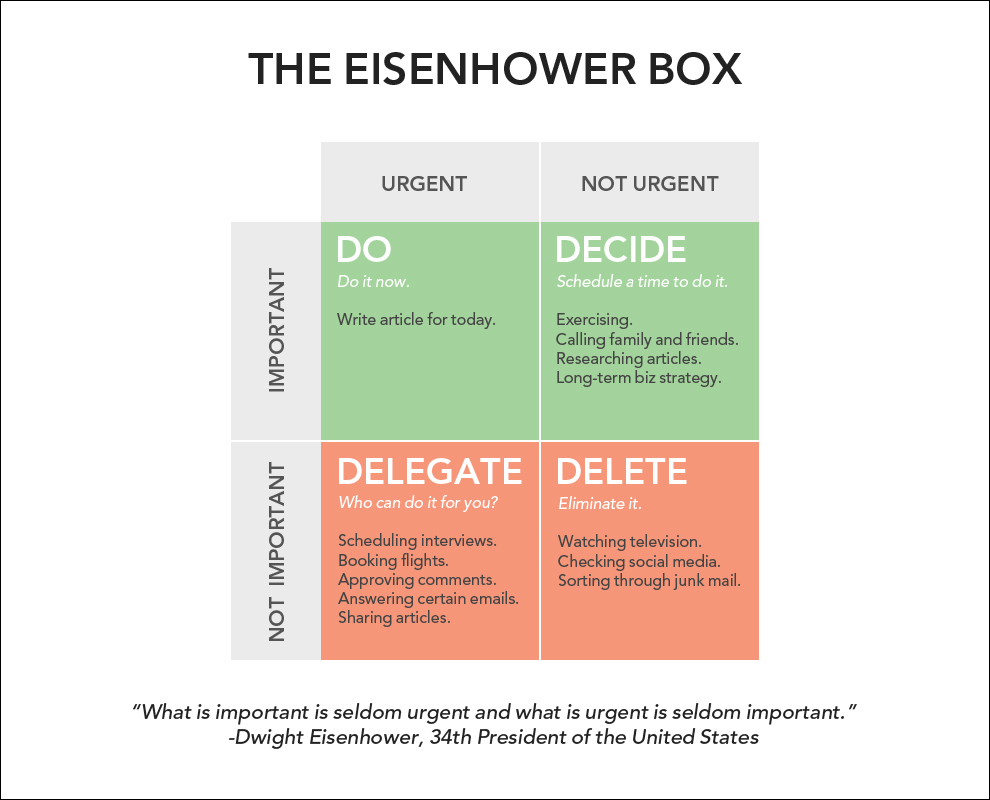
The main beauty of the method is its quickness. First, it represents the “Task Statistics” visually. You can immediately assess the effectiveness of your time resources used. Second, answering “yes” or “no” to only two questions, you split all your tasks into 4 groups. If you initially had the mission to “divide your tasks into 4 groups,” it would’ve taken you much longer.
Checking the Effectiveness
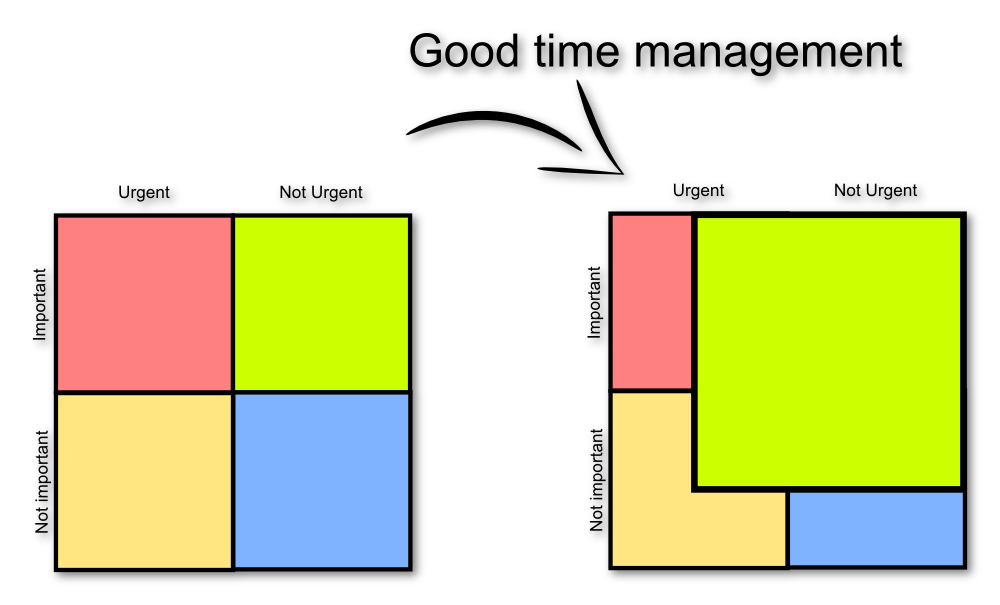
You can use the Eisenhower method not only to sort out the tasks into those that move you towards the goal, and those that hinder. You can also use it to assess the overall effectiveness. Ideally, as soon as you have offhandedly answered “yes and no” to the two already known questions for each task, you will find out that almost all of your problems, “fell” into the second quadrant.
But of course, most often it doesn’t happen, and then the matrix clearly shows where you have a distortion and where you risk to find yourself at the end of the day, if you don’t shift to the productive tasks.
To apply the method, there is a considerable amount of mobile, web- and desktop software. And to set the goals and achieve them there is a service – SmartProgress, which has already helped implement over 35,000 goals. And which goal is yours?

 Русский
Русский










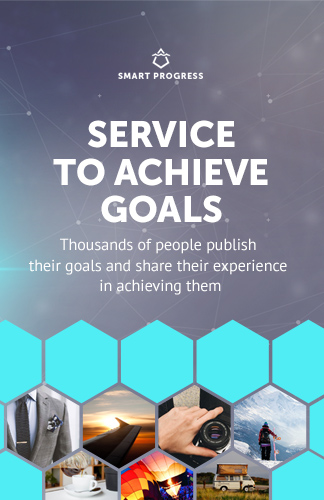
uk viagra no prescription
Goal-setting and activity control on the basis of the Eisenhower matrix – SmartTalks
usa peptides tadalafil
Матрица Эйзенхауэра: быстрое целеполагание и контроль текущих дел – SmartTalks
help with essay papers
Goal-setting and activity control on the basis of the Eisenhower matrix – SmartTalks
college essay service
Goal-setting and activity control on the basis of the Eisenhower matrix – SmartTalks
best rated essay writing service
Goal-setting and activity control on the basis of the Eisenhower matrix – SmartTalks
write my college essay
Goal-setting and activity control on the basis of the Eisenhower matrix – SmartTalks
definition essay help
Матрица Эйзенхауэра: быстрое целеполагание и контроль текущих дел – SmartTalks
essay writing service forum
Матрица Эйзенхауэра: быстрое целеполагание и контроль текущих дел – SmartTalks
argumentative essay help
Goal-setting and activity control on the basis of the Eisenhower matrix – SmartTalks
admission essay services
Goal-setting and activity control on the basis of the Eisenhower matrix – SmartTalks
college admission essay help
Goal-setting and activity control on the basis of the Eisenhower matrix – SmartTalks
graduate school essay writing service
Goal-setting and activity control on the basis of the Eisenhower matrix – SmartTalks
online essay writers wanted
Goal-setting and activity control on the basis of the Eisenhower matrix – SmartTalks
homework essay help
Матрица Эйзенхауэра: быстрое целеполагание и контроль текущих дел – SmartTalks
essay help online chat
Матрица Эйзенхауэра: быстрое целеполагание и контроль текущих дел – SmartTalks
the best essay writer
Матрица Эйзенхауэра: быстрое целеполагание и контроль текущих дел – SmartTalks
custom essay meister
Goal-setting and activity control on the basis of the Eisenhower matrix – SmartTalks
online mexican pharmacy xanax
Goal-setting and activity control on the basis of the Eisenhower matrix – SmartTalks
priligy johor pharmacy
Goal-setting and activity control on the basis of the Eisenhower matrix – SmartTalks
bromocriptine online pharmacy
Goal-setting and activity control on the basis of the Eisenhower matrix – SmartTalks
ventolin hfa online pharmacy
Матрица Эйзенхауэра: быстрое целеполагание и контроль текущих дел – SmartTalks
oxycodone pharmacy laws
oxycodone pharmacy laws
tadalafil patent expiry
tadalafil patent expiry
viagra for cheap
viagra for cheap
cialis tablets in australia
cialis tablets in australia
is cialis covered by medicare
is cialis covered by medicare
viagra pills price in usa
viagra pills price in usa
cialis nova scotia
cialis nova scotia
online pharmacy viagra prescription
online pharmacy viagra prescription
sildenafil brand name in india
sildenafil brand name in india
cialis shop in australia
cialis shop in australia
sildenafil 20 mg pharmacy
sildenafil 20 mg pharmacy
pharmacy cialis no prescription
pharmacy cialis no prescription
cialis online no prior prescription
cialis online no prior prescription
india rx pharmacy
india rx pharmacy
Cabgolin
Cabgolin
generic tadalafil prices
generic tadalafil prices
sildenafil prescription prices
sildenafil prescription prices
cialis australia online
cialis australia online
discount viagra online canada
discount viagra online canada
oxycodone pharmacy in michigan
oxycodone pharmacy in michigan
cialis experience reddit
cialis experience reddit
viagra 500mg price in india
viagra 500mg price in india
cheap viagra pills online
cheap viagra pills online
viagra 100mg online buy
viagra 100mg online buy
order viagra uk
order viagra uk
how to buy sildenafil online usa
how to buy sildenafil online usa
generic viagra sildenafil 100mg
generic viagra sildenafil 100mg
cialis coupon code
cialis coupon code
cialis brand name without prescription
cialis brand name without prescription
how to avoid cialis side effects\
how to avoid cialis side effects\
cialis black brand
cialis black brand
flagyl hurones
flagyl hurones
gabapentin langzeitfolgen
gabapentin langzeitfolgen
bactrim gotas
bactrim gotas
stick season lyrica
stick season lyrica
taubheitsgefühl tamoxifen
taubheitsgefühl tamoxifen
valtrex benefits
valtrex benefits
lisinopril hypoglycemia
lisinopril hypoglycemia
lasix assunzione
lasix assunzione
glucophage hormones
glucophage hormones
does semaglutide make you tired
does semaglutide make you tired
semaglutide 6 week before and after
semaglutide 6 week before and after
semaglutide vs metformin
semaglutide vs metformin
keflex doses
keflex doses
zoloft in pregnancy
zoloft in pregnancy
duloxetine for nerve pain
duloxetine for nerve pain
flagyl complaints
flagyl complaints
is lexapro a maoi
is lexapro a maoi
fluoxetine mood swings
fluoxetine mood swings
cap novo-gabapentin
cap novo-gabapentin
long-term effects of cymbalta on the brain
long-term effects of cymbalta on the brain
how to order sildenafil online
how to order sildenafil online
trial of psilocybin versus escitalopram for depression
trial of psilocybin versus escitalopram for depression
cephalexin and benadryl for dogs
cephalexin and benadryl for dogs
cephalexin 500mg for sinus infection
cephalexin 500mg for sinus infection
what are the side effects of ciprofloxacin
what are the side effects of ciprofloxacin
bactrim ds 800-160
bactrim ds 800-160
bactrim over the counter cvs
bactrim over the counter cvs
amoxicillin and clavulanate potassium used for
amoxicillin and clavulanate potassium used for
effexor vs cymbalta
effexor vs cymbalta
ddavp labor
ddavp labor
sulfa allergy and flomax
sulfa allergy and flomax
contrave starting dose
contrave starting dose
what is augmentin used for
what is augmentin used for
generic for depakote
generic for depakote
cozaar tablets
cozaar tablets
flexeril for back pain
flexeril for back pain
ezetimibe insuficiencia renal
ezetimibe insuficiencia renal
diclofenac sodium tablet
diclofenac sodium tablet
stopping diltiazem effects
stopping diltiazem effects
citalopram 10mg vs 20mg
citalopram 10mg vs 20mg
how long does amitriptyline take to work for nerve pain
how long does amitriptyline take to work for nerve pain
allopurinol 300mg
allopurinol 300mg
how much aspirin can i take
how much aspirin can i take
aripiprazole wiki
aripiprazole wiki
celebrex alternatives
celebrex alternatives
bupropion xl 150mg
bupropion xl 150mg
how long does it take for celexa to work
how long does it take for celexa to work
baclofen dose for back pain
baclofen dose for back pain
augmentin dose
augmentin dose
goli ashwagandha gummies
goli ashwagandha gummies
celecoxib 100mg capsules
celecoxib 100mg capsules
nebenwirkungen actos
nebenwirkungen actos
remeron dosage 7.5 mg
remeron dosage 7.5 mg
abilify vs seroquel
abilify vs seroquel
acarbose cats
acarbose cats
semaglutide for weight loss
semaglutide for weight loss
robaxin a controlled substance
robaxin a controlled substance
repaglinide and weight gain
repaglinide and weight gain
protonix 40 mg tablet
protonix 40 mg tablet
otc tamsulosin
otc tamsulosin
how long does it take for venlafaxine to work
how long does it take for venlafaxine to work
ivermectin 12 mg
ivermectin 12 mg
spironolactone weight loss reddit
spironolactone weight loss reddit
synthroid dilantin
synthroid dilantin
long term side effects of sitagliptin
long term side effects of sitagliptin
tizanidine bluelight
tizanidine bluelight
voltaren gel patient savings card
voltaren gel patient savings card
sildenafil for pe
sildenafil for pe
ez online pharmacy viagra
ez online pharmacy viagra
tadalafil side effects long term
tadalafil side effects long term
viagra levitra order
viagra levitra order
side effects of sildenafil
side effects of sildenafil
cialis online pills
cialis online pills
prozac pharmacy prices
prozac pharmacy prices
levitra over the counter
levitra over the counter
ivermectin lice
ivermectin lice
stromectol for head lice
stromectol for head lice
ivermectin 1%cream
ivermectin 1%cream
ivermectin over the counter canada
ivermectin over the counter canada
amino tadalafil
amino tadalafil
blue sky peptides tadalafil
blue sky peptides tadalafil
vardenafil citrate
vardenafil citrate
cloridrato de vardenafil
cloridrato de vardenafil
ivermectin 0.1 uk
ivermectin 0.1 uk
how to buy viagra from india
how to buy viagra from india
stromectol without prescription
stromectol without prescription
can i buy sildenafil over the counter in canada
can i buy sildenafil over the counter in canada
augmentin indications
augmentin indications
prednisone for back pain
prednisone for back pain
what is doxycycline for
what is doxycycline for
what is trazodone for dogs
what is trazodone for dogs
valacyclovir vs valtrex
valacyclovir vs valtrex
metformin dosage when to take
metformin dosage when to take
symptoms for provigil
symptoms for provigil
cephalexin allergic reaction
cephalexin allergic reaction
does ciprofloxacin treat uti
does ciprofloxacin treat uti
can amoxicillin cause a rash
can amoxicillin cause a rash
is 30 mg of lisinopril a high dose
is 30 mg of lisinopril a high dose
what is keflex
what is keflex
is lyrica stronger than gabapentin
is lyrica stronger than gabapentin